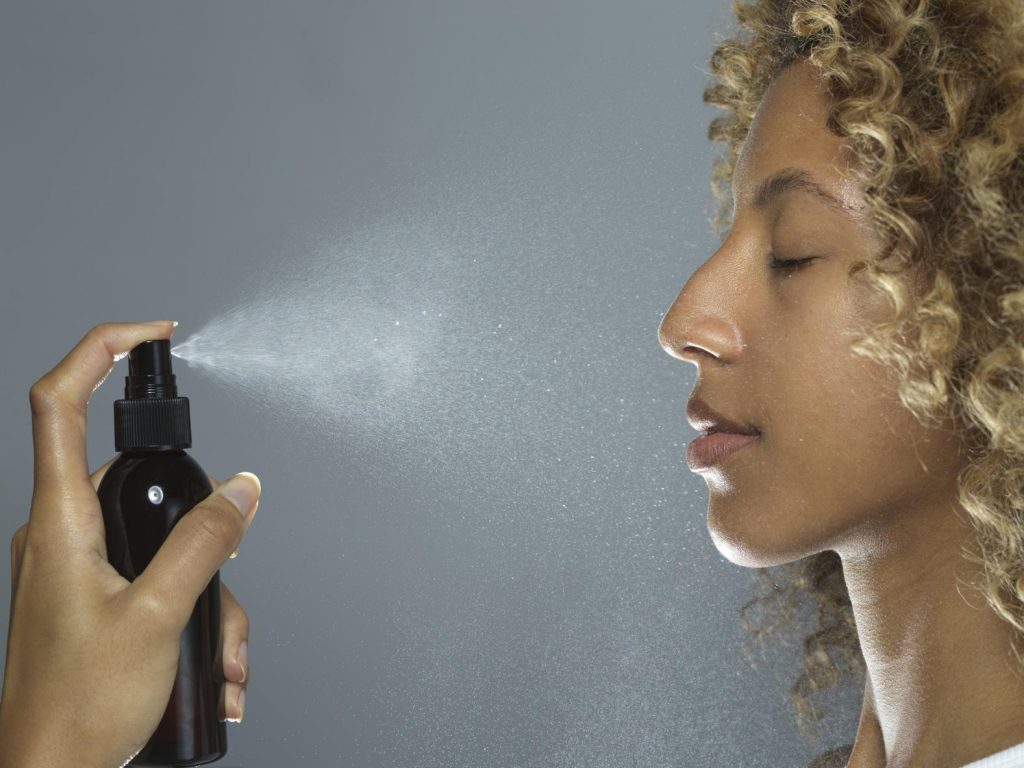Hypochlorous acid, aka HOCl, is one of the hottest skincare ingredients right now. The non-toxic disinfectant is touted for killing germs better than bleach, while still being gentle enough to spritz on your face, even if you have sensitive or acne-prone skin. (Fun fact: it’s also produced by our white blood cells to fight infections and calm inflammation.)
In skincare, it works by killing harmful bacteria without disrupting the skin barrier. “Hypochlorous acid is particularly helpful for calming irritated or reactive skin, reducing acne flares, and managing skin conditions like eczema,” says Dr. James Kilgour, board-certified dermatologist with Golden State Dermatology, California.
Trouble is, skin experts say most people use it incorrectly—limiting its benefits, canceling out other products, and in some cases, even causing unwanted side effects.
Below, three dermatologists break down the most common mistakes people make with hypochlorous acid and how to use it safely in your skincare routine for best results:
Seven Rookie Mistakes You Might Be Making When Using Hypochlorous Acid
A frequent issue is using mists that are poorly stabilized or at the wrong pH, which lowers their efficacy and shortens their shelf life. Concentration also matters. “Very low ppm solutions won’t meaningfully reduce microbes, while very high ppm can feel drying or sting compromised skin,” says Dr. Kilgour.
The fix: Choose a stabilized product that specifies concentration in ppm or % and includes a clear expiration date. For daily facial use, look for 50–200 ppm (0.005–0.02%) and a pH of around 4–6, Dr. Kilgour recommends. Also, make sure the product comes in sealed and opaque packaging as hypochlorous acid breaks down when exposed to light, air, and heat. And avoid transferring it out of its original packaging to preserve its stability and potency.
Another common mistake is not giving hypochlorous acid enough contact time with your skin. “Spritzing and immediately wiping offers little benefit as contact time is critical,” says Dr. Kilgour.
The fix: Let the spray fully air-dry, so it can do its job before layering on other products. Depending on the formula, this can take 30-60 seconds. The finer the mist, the quicker it will absorb into the skin, says Michelle Ventresca, licensed esthetician and founder of Live by Skin.
“Using HOCl over makeup, heavy sweat, or sunscreen is problematic, as organic matter on the skin consumes the active before it can work,” says Dr. Kilgour.
The fix: Use it after cleansing and before applying sunscreen and makeup. “For a mid-day refresh, gently remove oil or sweat first before misting,” Dr Kilgour adds.
As with most good things, more isn’t always better. “While HOCl is gentle, too much use can disrupt the skin’s barrier and microbiome, counteracting its soothing effects,” says Dr. Azadeh Shirazi, board-certified dermatologist and founder of AziMD Skincare. If you notice any dryness, redness, or itching, you may be overusing it.
The fix: Dr. Shirazi recommends spritzing it lightly once a day, or twice daily at the most.
Even though hypochlorous acid is quite gentle, it’s best to avoid using it at the same time as strong actives such as retinol, benzoyl peroxide, or exfoliating acids, unless your dermatologist says so, notes Dr. Shirazi.
In addition, cosmetic dermatologist Dr. Julie De la Cruz advises against combining it with vitamin C serums, as both have delicate pH levels and using them together can reduce their effectiveness.
The fix: Use hypochlorous acid on nights without heavy actives. Or, apply it before moisturizing and then use your actives, if your dermatologist greenlights it.
While hypochlorous acid reduces bacteria, it’s not sufficient on its own for removing dirt, sweat, oil, makeup, and other impurities from your skin. “It’s important to recognize HOCl as a complementary step and not a replacement for a cleanser or moisturizer,” says Dr. Shirazi.
The fix: Use hypochlorous acid as part of a balanced skincare routine. “In the morning, cleanse, mist the HOCl, then apply your moisturiser with SPF. And at night, cleanse, mist the HOCl followed by treatment serums, and lastly moisturize,” recommends Dr. Kilgour.
While hypochlorous acid is generally safe, it should not be used directly on open wounds or post-procedure skin without professional guidance, as it can cause stinging or irritation, says Melanie Abeyta, aesthetic nurse practitioner and owner of Harmony Aesthetics Center, California.
The fix: Always use hypochlorous acid as directed and consult a dermatologist before applying it to compromised skin.
Finally, as with any skincare practice, it’s important to be consistent and pair hypochlorous acid with good skincare hygiene like proper hydration, adequate sleep, a balanced diet, and daily sunscreen.

